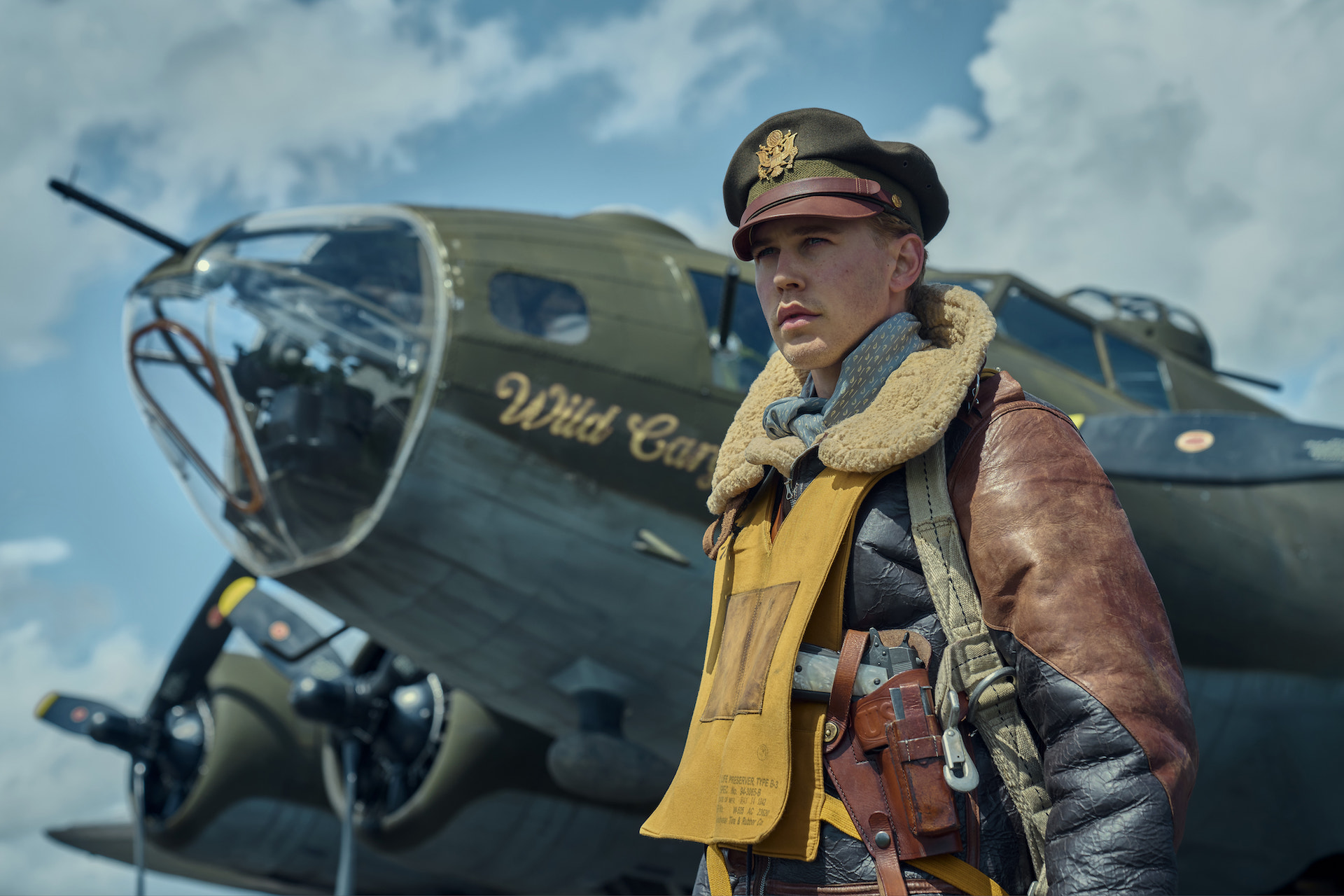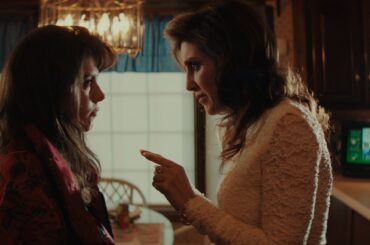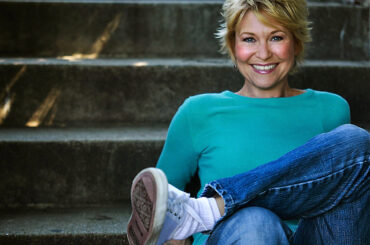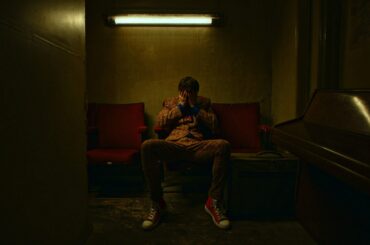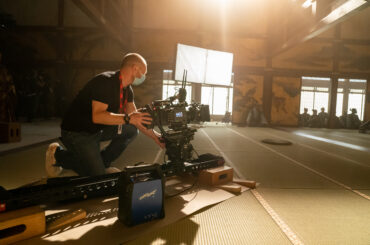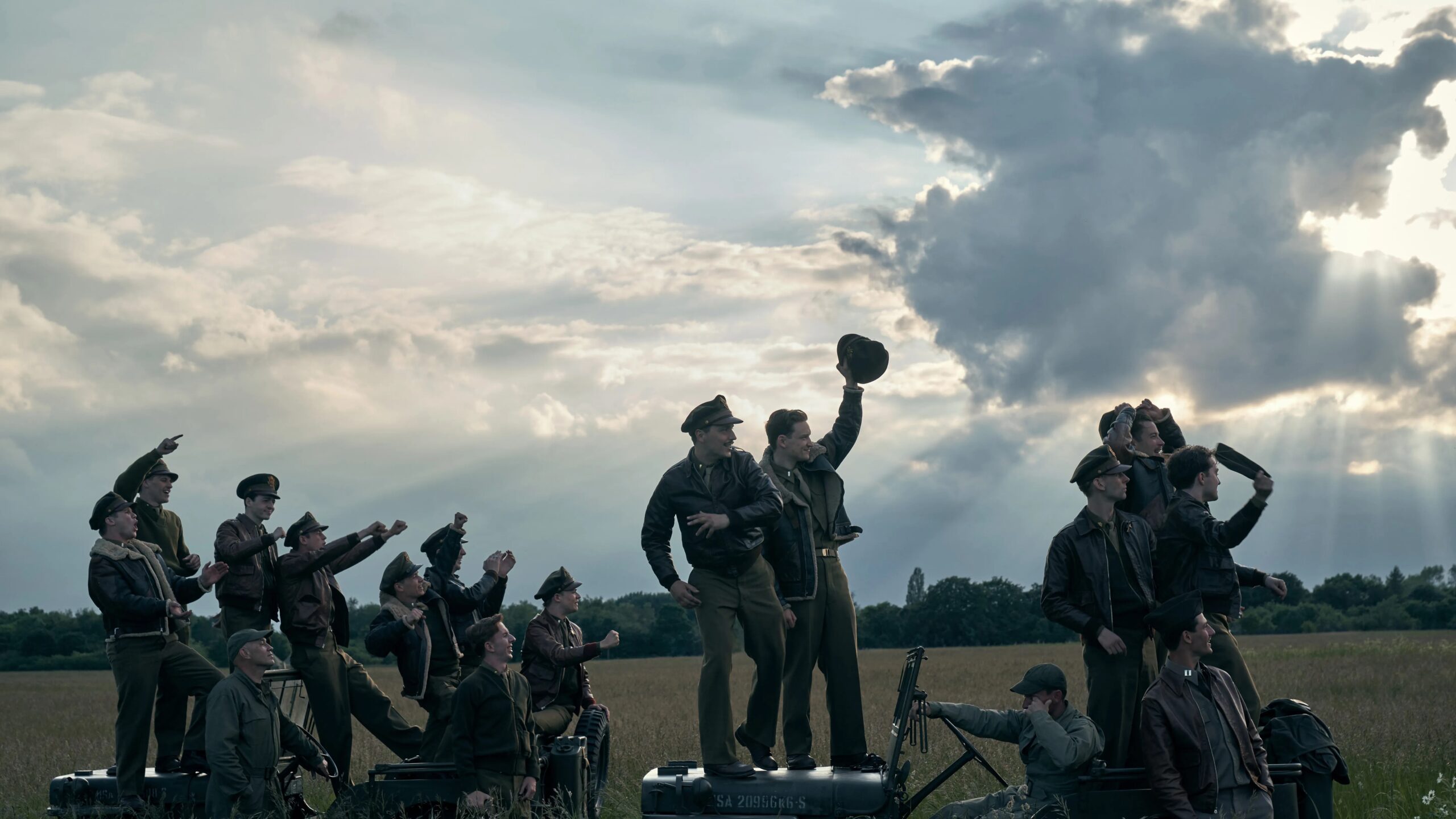
Colleen Atwood is one of the best and most celebrated costume designers of all time with over 88 Film and TV credits. A career that spans 4 decades with a variety of genres, she has 12 Academy Award Nominations with 4 wins. The artist started working in film in the ’80s and came into prominence in the ’90s with stunning work with directors like Tim Burton and Jonathan Demme on classics like Edward Scissorhands and The Silence of the Lambs, creating some of the most iconic costumes like Edward’s clothing and Hannibal’s mask.
Masters of the Air is Atwood’s first project that covers World War II.
The series is the latest collaboration by Steven Spielberg’s Amblin and Tom Hanks and Gary Goetzman’s Playtone, previously producing the two epic miniseries Band of Brothers and The Pacific. This story covers the real-life 100th Bomb Group and their dangerous missions inside Nazi-occupied Europe at the height of the war. It stars some of the brightest young actors working today, including Austin Butler, Callum Turner, Anthony Boyle, and Barry Keoghan. Atwood recently spoke to Immersive Media via Zoom about her costumes for the series.
[The following conversation has been edited for clarity and length.]
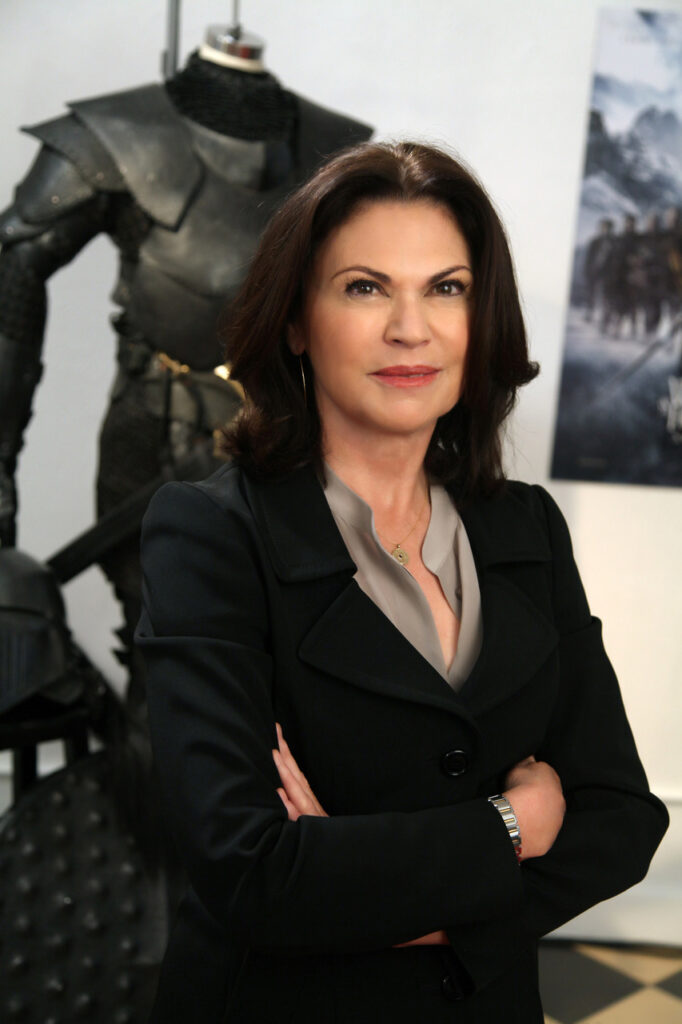
How did you get involved with this project?
I know the guys from Playtone, from my Jonathan Demme days, so I know Gary Goetzman from that era, and so I’ve worked with them on and off over the years. But when they had this, they called me and I was like, “Oh my gosh, I’ve never done anything like that. And I was so excited by the idea of telling this story.”
My dad was a Veteran, in the Second World War, who would never talk about it. So it was never really part of my life in that way. But I feel the era is fascinating to me and the Cold War era that followed it set up the world we’re living in today. Then I got the script and saw all the amazing character work of these real heroes in telling their story, so I just stepped into it that way.
So what was that like research-wise in terms of how much was like, oh, we have to be very historical on this, but oh, this stuff looks cool and I want to embellish it for good television?
Well, it’s a double-edged sword because you have the military already, which is a historical institution. You have these amazing characters and it was great because there was a lot to work with, considering the times and everything, there were a lot of photographs of these guys in training and camps. They took pictures. The archive at Thorpe Abbott’s in England had great pictures of daily life, which helped.
And then you had this sort of military portraiture of the times where they’d had their scarfs and their hats and their whole proper old-time kind of portraits. So, it was nice to see both things and to see that the clothes weren’t pristine. We tend to see uniforms represented in a very kind of clean, pristine manner. And it was great to see all these guys, how they looked like really living and working in their uniforms, which became their clothing or costumes in the story.
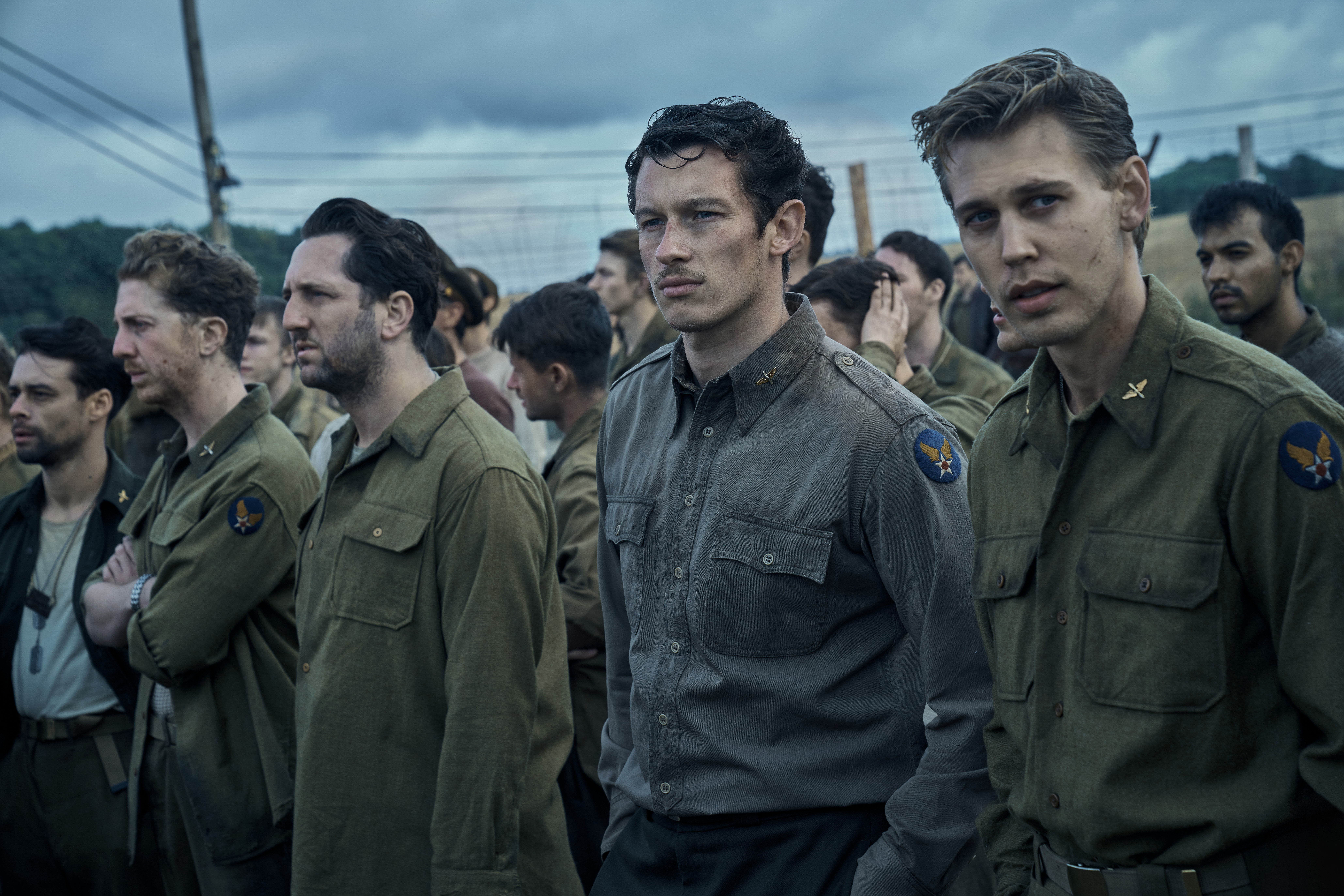
The wear and tear lends itself to much more realism. Everything looks lived-in. How’d you create that effect?
It was a huge part of my approach. I wanted, it’s a journey of these guys that went out on these eight to 10-hour missions, sweating the stress level beyond, so getting hit by bits of flack, which those clothes protected them from a bit, the leathers and stuff. So it was really important to me that I show along with the men, the clothes made the journey.
I manufactured the clothing except for I did use rental dress uniforms, but for the rest of the clothing, I made everything. I took them and sheared away the sheep skin inside, so they weren’t so thick, and beat them literally in cement mixers with stones just to break down the leather and give it a lived-in look. Then I manipulated it, oiled it, encouraged the guys to wear ’em, and not be afraid that they weren’t sacred cows. They were like clothes, I wanted it to have that feeling.
That’s excellent. And you came up with the 200 to 300 jackets, correct?
Yes. We had to manufacture that many jackets. They weren’t out there. I had a couple of originals that I found that I replicated through a guy who also does military reproductions in the UK, so he was able to make the jackets for me. He was set up for that.
We made Egan’s jacket in-house just because it was so specific and a few of the jackets in-house, the jumpsuits, and the flight suits I also had to make because I found a few originals, but they were short for the guys that are out there today. People were smaller in that era. So, I manufactured those with original fabric and then some reproduction fabric. I found a reproduction house in Japan that I sourced fabric and hardware from.

What was it like collaborating with Austin Butler? What was discussed in the first fitting?
Austin came in for his fitting and we had really good pictures of Cleven and he’d done his research. He was very prepared and he knew kind of what Cleven’s style was. We just sort of started working with the pieces and the elements of the costume and just went through from what he would’ve been assigned as a cadet through the arc of his journey. And we did the crusher in the room ourselves.
We did everything, the glasses, the watches, and how he wore his scarf. We worked it all out together in his first fitting. And then, I just had to do a few tweaks to the stuff and age it down to get ready to go. But he was very prepared for the part he’d read, he’d read up everything, and he knew the script, but he also knew the story of his character well.
Beyond the clothes there, what were some interesting objects they used?
I found the masks then I found a guy who sold original glasses from the era, and they were so beautiful that when I found these people, I just bought them immediately because they are really rare. Same thing with the watches. I was able to buy not only the Army issue watches, but also the old watches. They liked the twist of the flex band because they wore their watches this way to be able to see the time easily when they were flying and stuff. So all those little accouterments had a lot to do with building the character of each of the pilots.
How’d you want the costumes to work alongside the production design?
The production design and the plane design was massive, which was probably the first thing anybody started. It was spectacular. On my first day, I landed in England the next day I went out to look at the B-17. I went inside the plane and I knew I had the sizes on the actors, and the plane is authentic scale and I was like, “Oh my God, they’re going to get stuck fooling around in here with all their gear on and stuff.” But they actually, they managed, we figured it out and stuff. They kept true to the plane. It was just so inspirational to see all the wood and all the dials. Everything was pristine and beautiful. Chris Seagers put his heart and mind into that and made it perfect.
And the production evolved as the story progressed…
When you got to Thorpe Abbotts, Chris had to repurpose it for different, as the story progressed with different areas, and he did some very inspired stuff and how the inside and the outside of each the mess halls looked at different times and the lighting and the hospital. And then when we went to the camps, they were all in the same place, but he came up with the idea for when they made the big march through Germany, the last cap they ended up with, he tar papered the outside of the same places. So you always felt like you were in the real place. The ground was super muddy. That wasn’t fake. It was all real. So I just left it on the boots and the clothes and let it dry overnight and went out the next day. It helped give the texture of the thing.
Having producers like Tom Hanks and Steven Spielberg involved, the bar must have been pretty high.
That’s pretty amazing to have people like Tom and Steven, not only are they there involved in a way, and then supported and executed all their vision with Gary on the ground with all of us, but you realize that what these guys have done before, all of them Playtone, Tom, Steven, what they’ve all done before is an amazing, amazing historical and just entertainment body of work, that it has a level of quality, like you’re saying, that you do not want to disappoint them, you want to keep it at that bar. You want to raise the bar when you’re honoring not only those stories but honoring artists in the industry who care about what they’re doing.
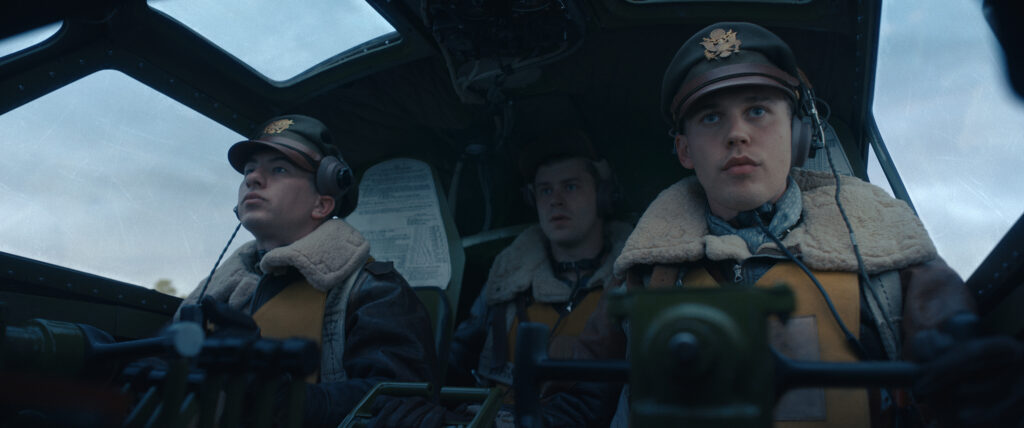
You worked on Joe vs the Volcano with Tom Hanks. As a fan of that movie, what can you tell me about that experience?
Yeah, that’s where I met Tom. I did Philadelphia with him, and then I did That Thing You Do (Hanks’ Classic Directorial Debut). I love Joe vs The Volcano. It’s really funny. It’s such a clever movie and I had the best time on it. It was a design job for me where I was encouraged by the director John Patrick Shanley, to design, don’t be afraid. “It’s okay if all the dresses are yellow in the room. That’s what I want. It’s okay.” He was always allowing it to happen in a way that I loved; it was awesome. And then Meg Ryan, played the same woman three times with different hair colors, graduated to blonde. It was a fun shoot.
Masters of the Air is now available to stream on Apple TV


